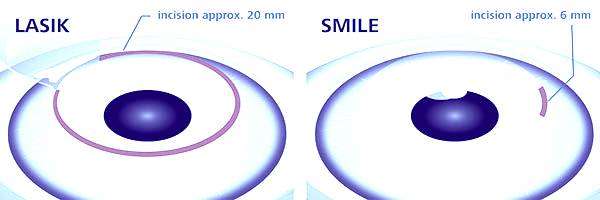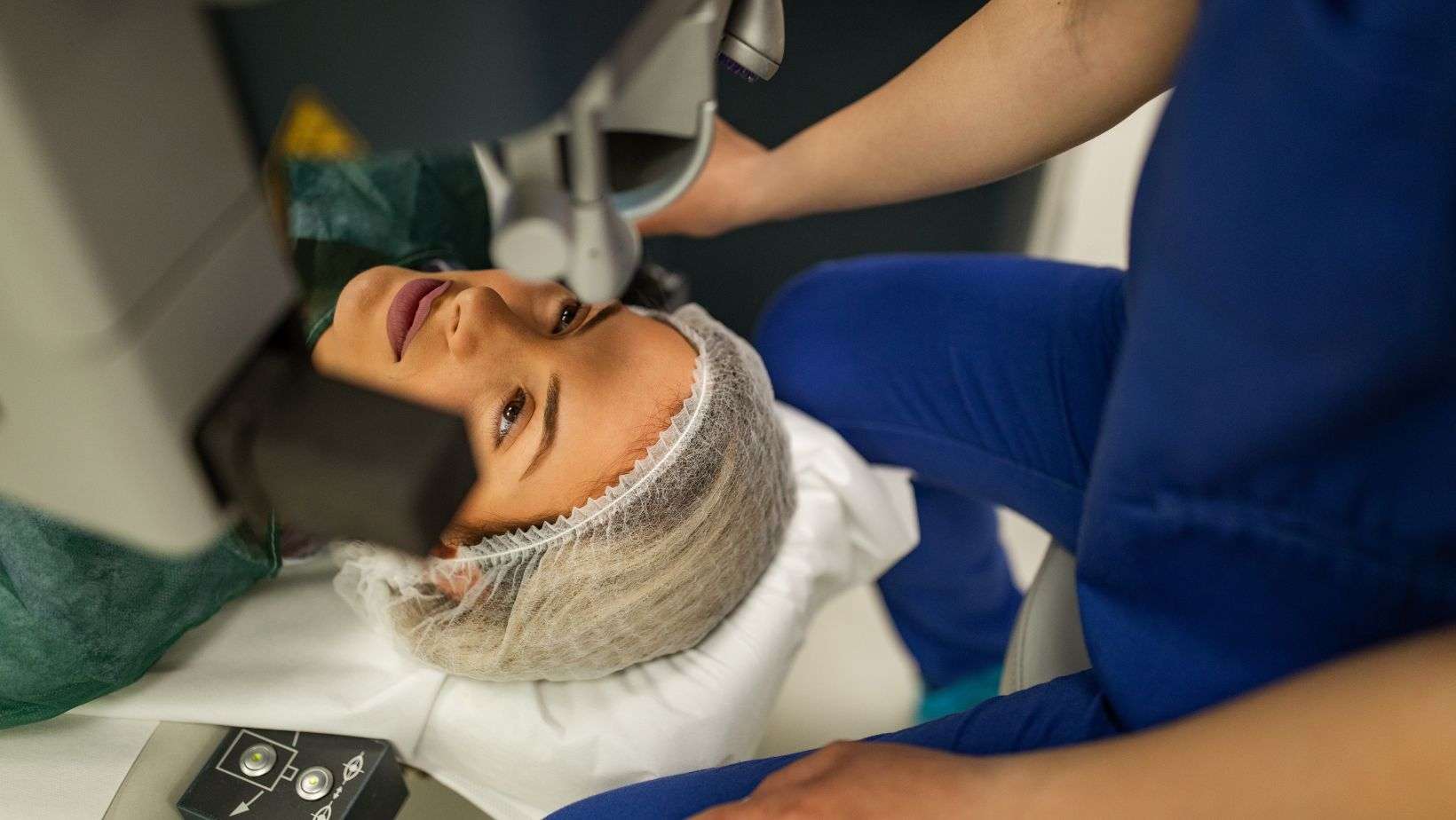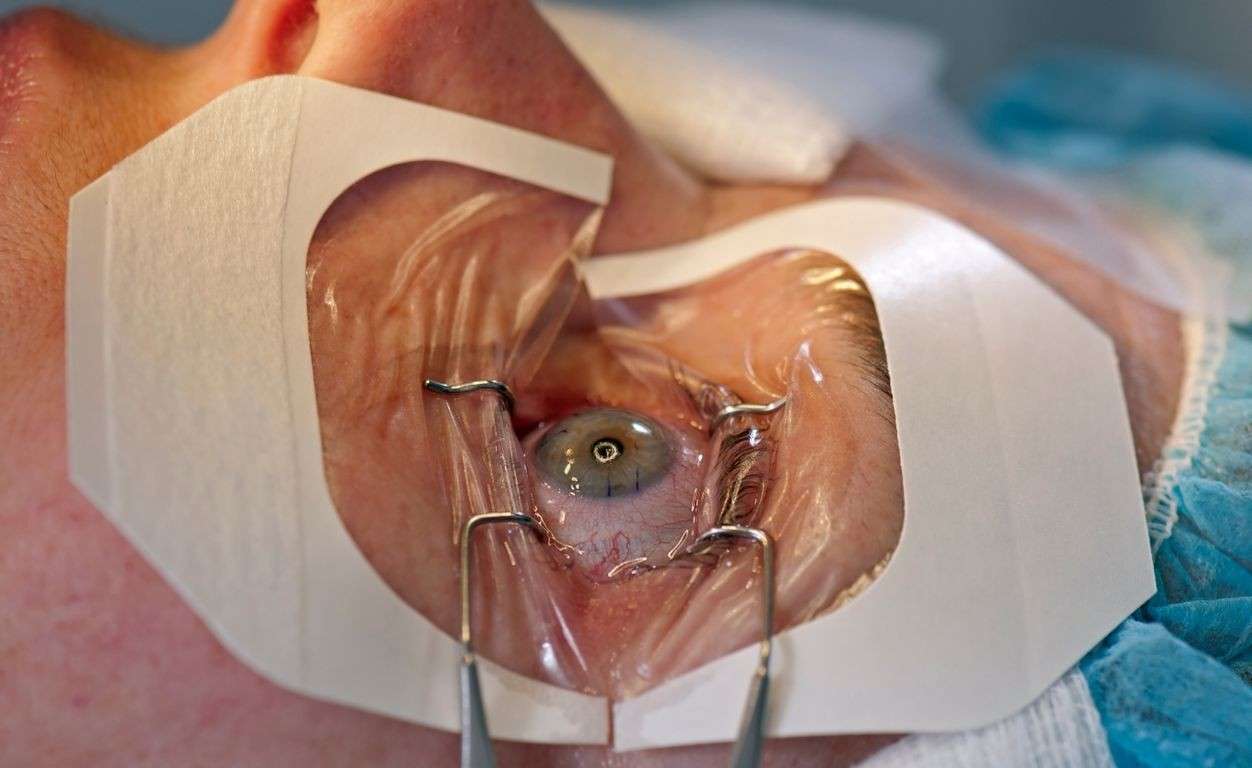what is smile eye surgery:
Smile eye surgery (also known as SMILE, which stands for Small Incision Lenticule Extraction) is a type of laser eye surgery used to correct vision problems such as myopia (nearsightedness) and astigmatism.
During SMILE surgery, a femtosecond laser is used to create a small, precise incision in the cornea, creating a small disc-shaped piece of tissue called a lenticule. This lenticule is then removed through the incision, reshaping the cornea and correcting the vision problem.
SMILE surgery is different from other types of laser eye surgery, such as LASIK, in that it does not involve creating a flap in the cornea. This means that the cornea is less likely to become dry and irritated after surgery, and there is a lower risk of complications such as flap dislocation. Additionally, SMILE surgery may be a better option for people with thin corneas or certain types of astigmatism.
However, SMILE surgery is not suitable for everyone, and it is important to consult with an ophthalmologist or other eye care professional to determine if it is the best option for your individual needs.
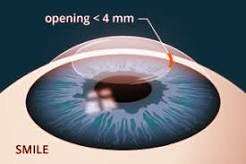
Smile surgery process:
Smile surgery is a type of cosmetic surgery that aims to improve the appearance of a person’s smile. It can involve a variety of procedures, depending on the specific issues that need to be addressed. Here is an overview of the general process involved in smile surgery:
- Consultation: The first step in smile surgery is to meet with a qualified cosmetic dentist or plastic surgeon who specializes in this type of procedure. During this initial consultation, the surgeon will evaluate your smile and discuss your goals and expectations for the surgery.
- Treatment plan: Based on your consultation, the surgeon will develop a treatment plan that addresses your specific concerns. This plan may include one or more procedures, such as teeth whitening, veneers, or orthodontic treatment.
- Pre-operative preparation: Prior to the surgery, you may be required to undergo some preparation, such as teeth cleaning or X-rays. You may also be asked to avoid certain foods or medications that can interfere with the procedure.
- Anesthesia: Smile surgery is typically performed under local anesthesia, which means that you will be awake but your mouth will be numb. In some cases, sedation or general anesthesia may be used.
- Procedure: The specific procedures involved in smile surgery will vary depending on your treatment plan. For example, if you are getting veneers, the surgeon will remove a thin layer of enamel from your teeth and then place the veneers over them. If you are getting orthodontic treatment, you may need to wear braces or clear aligners to gradually shift your teeth into the desired position.
- Post-operative care: After the surgery, you will need to follow specific instructions for post-operative care, such as taking pain medication or antibiotics, avoiding certain foods, and keeping your mouth clean. You may also need to wear a special appliance or retainer to maintain the results of the surgery.
Who is Eligible For Smile Surgery:
Smile eye surgery, also known as SMILE (Small Incision Lenticule Extraction) is a type of laser eye surgery that can correct certain vision problems such as nearsightedness (myopia) and astigmatism.
The eligibility for SMILE eye surgery depends on several factors, including:
- Age: Generally, SMILE eye surgery is recommended for people who are at least 18 years old and have had stable vision for at least one year.
- Vision Prescription: SMILE eye surgery is most suitable for people with a prescription of up to -10 diopters of nearsightedness and up to +5 diopters of astigmatism.
- Corneal Thickness: The thickness of the cornea is an important factor in determining eligibility for SMILE eye surgery. Patients must have a corneal thickness of at least 500 microns.
- Eye Health: People with certain eye conditions, such as dry eye syndrome or glaucoma, may not be good candidates for SMILE eye surgery.
- Overall Health: People with certain medical conditions or who take certain medications may not be eligible for SMILE eye surgery.
It’s important to consult with an eye doctor or ophthalmologist to determine if SMILE eye surgery is appropriate for your specific case. They can evaluate your eye health and provide recommendations on the best course of treatment for your vision correction needs.
How to smile surgery works:
The femtosecond laser-assisted procedure we offer involves creating a corneal lenticule that is extracted whole and removed through a small incision. This is an alternative to the excimer laser-assisted in situ keratomileuses (LASIK) procedure and is reported to achieve similar effects with excellent postoperative outcomes.
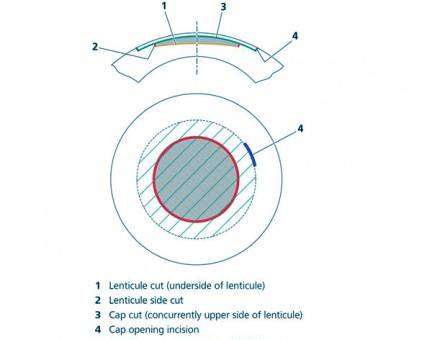
How is smile surgery done?
Smile eye surgery, also known as SMILE (Small Incision Lenticule Extraction) surgery, is a type of laser vision correction procedure used to treat nearsightedness (myopia). Here’s how the procedure is done:
- Anesthesia: The patient is given a numbing eye drop to ensure they are comfortable during the procedure.
- Creating a lenticule: A femtosecond laser is used to create a lenticule (a small lens-shaped piece of tissue) within the cornea. This lenticule is used to correct nearsightedness.
- Removing the lenticule: A small incision (usually less than 4 mm) is made in the cornea, and the lenticule is removed through this opening. This reshapes the cornea, correcting the nearsightedness.
- Closing the Incision: The incision is left to heal on its own, without the need for stitches.
The entire procedure typically takes around 10-15 minutes per eye, and both eyes can usually be treated during the same session.
Smile Eye Surgery Cost:
Smile eye surgery, also known as Small Incision Lenticule Extraction (SMILE), is a type of laser eye surgery used to correct myopia (nearsightedness) and astigmatism. The cost of SMILE eye surgery can vary depending on several factors, such as the location of the clinic, the experience of the surgeon, and the technology used.
The cost of the surgery is usually around Rs. 1,00,000, which means Rs. 50,000 per eye.
It’s important to note that these costs are just estimates and can vary greatly depending on individual factors. It’s always a good idea to consult with a reputable ophthalmologist or clinic to get an accurate quote for SMILE eye surgery. Additionally, it’s important to consider the long-term costs of post-operative care and any potential complications.
Smile Surgery Success Rate:
There are different types of smile eye surgery, but in general, the success rate of the procedure is high. Smile eye surgery, also known as Small Incision Lenticule Extraction (SMILE), is a relatively new type of laser eye surgery that aims to correct vision problems, such as nearsightedness and astigmatism.
Studies have shown that the success rate of SMILE surgery is similar to that of traditional LASIK surgery, with most patients achieving 20/20 vision or better after the procedure. The exact success rate may vary depending on the patient’s individual circumstances, such as the severity of their vision problems and the skill of the surgeon performing the procedure.
It’s important to note that like any surgery, SMILE surgery does carry some risks and potential complications. Patients should discuss the risks and benefits of the procedure with their doctor before deciding if it’s right for them.
How long does SMILE surgery last?
SMILE (Small Incision Lenticule Extraction) eye surgery is a type of laser refractive surgery used to correct nearsightedness and astigmatism. The actual laser part of the procedure usually takes only a few minutes, typically less than five minutes per eye.
However, the overall length of the SMILE eye surgery procedure can vary depending on several factors, including the patient’s case, the surgeon’s technique, and the equipment used.
Generally, patients can expect to spend around one to two hours at the surgical center or clinic for the entire SMILE eye surgery process, including pre-operative preparations, the procedure itself, and post-operative recovery time. However, this may vary depending on individual circumstances.
It’s important to discuss the specifics of the SMILE eye surgery procedure, including the expected timeline, with your eye surgeon before the procedure.
Is Smile Surgery Permanent?
SMILE (Small Incision Lenticule Extraction) eye surgery is a type of laser refractive surgery that is intended to provide permanent vision correction.
During the SMILE procedure, a small incision is made in the cornea and a small piece of tissue (lenticule) is removed to reshape the cornea and correct nearsightedness or astigmatism. This permanent reshaping of the cornea aims to correct the patient’s vision, reducing or eliminating their reliance on glasses or contact lenses.
While SMILE eye surgery is intended to be permanent, there are some factors that may impact the long-term stability of the results. These include age-related changes in vision, progressive eye conditions, or changes in the cornea’s shape or thickness over time.
It’s important to discuss the potential risks and benefits of SMILE eye surgery with your eye surgeon prior to the procedure, as well as the expected long-term outcomes and any potential limitations. Regular follow-up appointments with your eye doctor can also help to monitor the stability of your vision correction over time.
Is Smile Surgery Safe?
It’s important to note that smile surgery is a cosmetic procedure and is not typically covered by insurance. The cost of the surgery will vary depending on the specific procedures involved and the geographic location of the surgeon.
It’s important to note that there are several types of smile eye surgery, so the safety and effectiveness of the procedure can vary depending on the specific type of surgery and the individual patient.
That being said, in general, smile eye surgery is considered to be a safe and effective procedure for correcting certain types of vision problems. The procedure has been approved by regulatory bodies such as the FDA in the United States, and it has been performed on millions of patients worldwide.
As with any surgical procedure, there are potential risks and complications associated with smile eye surgery, such as dry eye, glare, halos, and infection. However, these risks are relatively low, and most patients experience little to no complications.
It’s important to talk to your eye doctor or a qualified surgeon about your specific situation to determine if smile eye surgery is a safe and appropriate option for you. They can discuss the potential risks and benefits of the procedure and help you make an informed decision about your eye care.
Is Smile Surgery Painful?
In general, smile eye surgery (small-incision lenticule extraction) is considered a minimally invasive procedure that typically causes less discomfort and a shorter recovery time compared to traditional LASIK surgery. Most patients report mild to moderate discomfort or pressure during the procedure, but any pain is usually short-lived and can be managed with topical anesthetic eye drops or over-the-counter pain medication.
It’s important to discuss any concerns or questions about smile eye surgery with a qualified ophthalmologist or eye surgeon who can provide you with more information about the procedure and what to expect during and after the surgery.
Can Smile Surgery be Detected?
It is possible for trained medical professionals to detect if a person has undergone smile eye surgery (also known as SMILE or Small Incision Lenticule Extraction). This procedure involves using a laser to create a small incision in the cornea to remove a piece of tissue, thereby correcting refractive errors in the eye.
During a routine eye exam, an ophthalmologist or optometrist may be able to detect signs of SMILE surgery, such as a cornea that appears slightly irregular or has a small incision. However, it may be difficult to detect the surgery without a detailed examination or specialized imaging tests.
It’s worth noting that there are no legal requirements for patients to disclose their SMILE surgery to others, and it’s ultimately up to each individual to decide whether or not they want to share this information.
Is LASIK the Same as SMILE?
LASIK (Laser-Assisted In Situ Keratomileusis) and SMILE (Small Incision Lenticule Extraction) are both types of refractive eye surgery that use lasers to reshape the cornea and correct vision problems.
However, they are not the same procedure.
LASIK involves creating a thin flap on the cornea using a microkeratome or femtosecond laser, lifting the flap, and then reshaping the cornea with an excimer laser. The flap is then repositioned on the cornea, and the procedure is complete.
SMILE, on the other hand, uses a femtosecond laser to create a small, precise incision in the cornea, and then removes a small lenticule of tissue from within the cornea. This reshapes the cornea and corrects the vision problem.
Both LASIK and SMILE are effective procedures for treating nearsightedness, farsightedness, and astigmatism, but the choice of which procedure to use depends on several factors, including the patient’s eye anatomy and the surgeon’s preference and experience.
